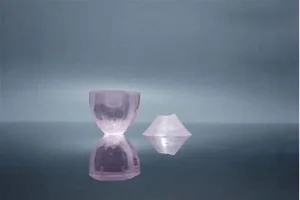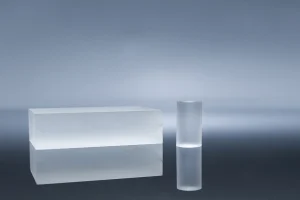Birefringent crystals have emerged as a key component in advancing laser technology. Understanding their unique properties and functionalities are critical for making strategic choices in laser frequency doubling. This article provides a deep dive into these intriguing materials, with a specific focus on beta barium borate (BBO), lithium triborate (LBO), and cesium lithium borate (CLBO) crystals.
Understanding Laser Frequency Doubling
Before we delve into the different types of crystals, it’s important to understand the context in which they are utilized – laser frequency doubling. Also known as second harmonic generation (SHG), this process converts two photons from a laser into one photon with twice the energy, thus, doubling the frequency.
The Role of Birefringent Crystals in Frequency Doubling
Birefringent crystals play an integral role in frequency doubling due to their unique optical properties. They enable phase matching, a phenomenon necessary for the efficient generation of the second harmonic.
Diving Deeper into the Characteristics of Beta Barium Borate (BBO) Crystals
In our exploration of birefringent crystals for laser frequency doubling, beta barium borate (BBO) crystals invariably take center stage due to their unique characteristics and high performance across several key parameters.
Examining the Exceptional Properties of BBO Crystals
BBO crystals are noted for their wide transparency range, spanning from the deep ultraviolet (around 189 nm) to the far infrared (around 3,500 nm). This large range of transparency makes BBO crystals highly versatile, accommodating different kinds of laser sources for frequency doubling. They can effectively handle both pulsed and continuous wave (CW) lasers, providing a great deal of flexibility in laser design.
Another significant property of BBO crystals is their high optical homogeneity. This property refers to the consistency in the refractive index of the crystal across its entire volume. BBO crystals exhibit excellent optical homogeneity, which translates into consistent, high-quality output across the beam profile. This is crucial in applications where precision and reliability are paramount.
Furthermore, BBO crystals boast high damage thresholds. This is the maximum amount of laser power that the crystal can withstand before it gets damaged. BBO’s high damage thresholds make it highly durable, capable of handling high power laser systems, and suitable for intensive, industrial applications.
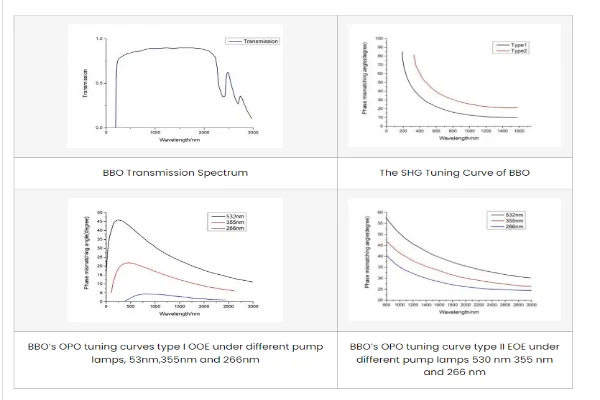
Unpacking the Phase-Matching Capabilities of BBO Crystals
Phase matching is a critical aspect of the frequency doubling process. It ensures that the photons involved in the process maintain a consistent phase relationship, thereby maximizing the generation of the second harmonic. BBO crystals are well-known for their exceptional phase-matching capabilities.
The phase-matching properties of BBO crystals stem from their birefringence. As birefringent crystals, BBOs have different refractive indices along different crystallographic axes. By adjusting the orientation of the crystal, we can achieve phase matching over a wide range of wavelengths, making BBO crystals highly versatile for frequency doubling across diverse laser sources.
Moreover, BBO crystals can accommodate both type I and type II phase matching. This flexibility opens up opportunities for optimizing the frequency doubling process based on the specific requirements of the laser system in question.
Exploring the High Conversion Efficiencies of BBO Crystals
The conversion efficiency of a crystal refers to its ability to convert the fundamental laser frequency into the second harmonic. The higher the conversion efficiency, the more power is transferred from the fundamental frequency to the second harmonic. BBO crystals shine in this area, showcasing impressive conversion efficiencies.
A key factor contributing to the high conversion efficiency of BBO crystals is their high nonlinear optical coefficients. These coefficients measure the strength of the nonlinear interaction between the laser light and the crystal, which in turn dictates the efficiency of the frequency doubling process.
BBO’s high nonlinear optical coefficients, coupled with its excellent phase-matching capabilities, make it a top performer in frequency doubling applications. As such, when it comes to the selection of crystals for laser frequency doubling, BBO crystals frequently emerge as the material of choice for researchers and practitioners alike.
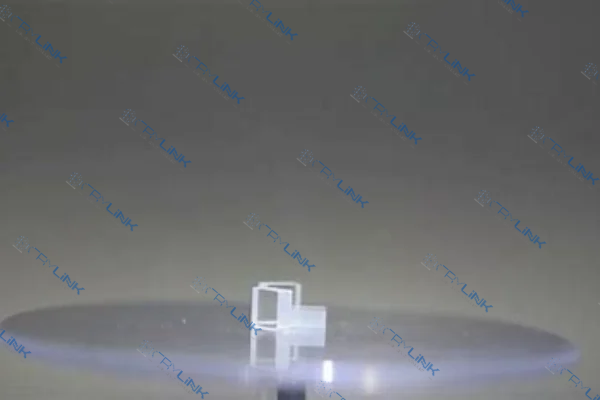
A Deeper Dive into Lithium Triborate (LBO) Crystals
When discussing the power and potential of birefringent crystals for laser frequency doubling, one cannot overlook lithium triborate (LBO). LBO crystals, with their array of unique aspects, make a compelling case for their selection in frequency doubling applications.
LBO Crystals: A Powerhouse of Unique Characteristics
One aspect that distinctly sets LBO crystals apart from other birefringent crystals is their broad transparency range. Their range extends from the deep ultraviolet region at around 160 nm up to the mid-infrared region at 2,600 nm. This impressive transparency span allows LBO crystals to be utilized with a variety of laser sources, offering an invaluable flexibility in their application.
Moreover, LBO crystals are revered for their high damage threshold, surpassing even that of BBO crystals. This extraordinary robustness makes LBO crystals suitable for high-power, industrial laser applications where durability under intensive laser power is critical. In fact, their high damage threshold has made them the crystal of choice in many high power Nd:YAG lasers for frequency doubling to generate green light.
Beyond their optical characteristics, LBO crystals also possess excellent chemical and mechanical properties. They are non-hygroscopic, meaning they do not absorb water from the atmosphere, which is a key advantage in operational stability and long-term reliability. Additionally, their high hardness lends to their mechanical stability, ensuring they can withstand challenging operational environments.
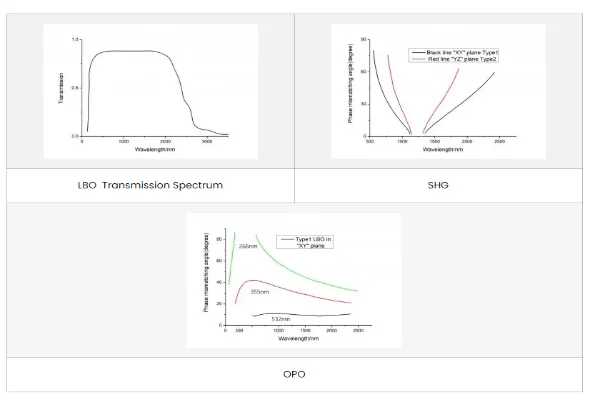
Unraveling the Phase-Matching Capabilities of LBO Crystals
Just like BBO crystals, LBO crystals also demonstrate outstanding phase-matching capabilities. Their birefringence allows for the effective phase matching across a wide range of wavelengths, providing a crucial advantage in laser frequency doubling.
One significant feature of LBO crystals is their ability to support non-critical phase matching (NCPM). In NCPM, the phase matching condition is achieved without having to adjust the angle of the crystal, thereby mitigating the effects of spatial walk-off and improving the beam quality of the generated second harmonic.
Furthermore, the large acceptance angle of LBO crystals minimizes the need for precise alignment, simplifying the setup and operation of the laser system. This user-friendly feature greatly eases the technical demands on operators, making LBO crystals a practical choice for various applications.
High Conversion Efficiencies: The Hallmark of LBO Crystals
When it comes to conversion efficiency, LBO crystals stand tall. They offer high conversion rates, turning a significant proportion of the incident fundamental laser frequency into the second harmonic. Their high conversion efficiency owes much to their excellent phase-matching capabilities and their high nonlinear optical coefficients.
It’s worth mentioning that LBO crystals’ performance in conversion efficiency isn’t just about numbers—it also translates into tangible benefits such as higher output power, improved energy efficiency, and reduced heat generation. As such, in the quest for frequency doubling, LBO crystals offer not just high performance but also operational advantages that can make a real difference in the field.
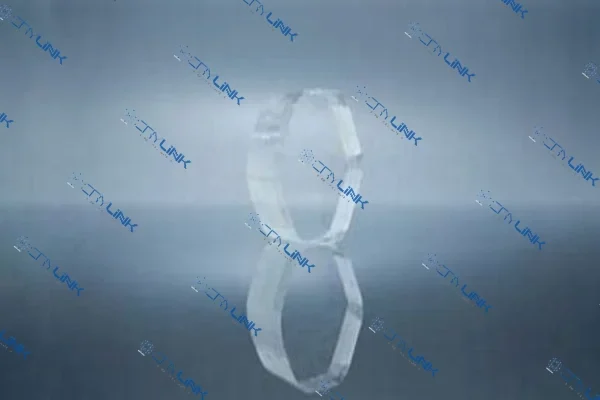
Unveiling the Potentials of Cesium Lithium Borate (CLBO) Crystals
Cesium lithium borate (CLBO) crystals represent the next frontier in the realm of birefringent crystals for laser frequency doubling. While relatively new to the scene, these crystals are quickly gaining traction due to their impressive properties and performance characteristics.
Distinguished Properties of CLBO Crystals
CLBO crystals hold a special place among birefringent crystals, primarily due to their high thermal conductivity. This trait is particularly critical for frequency doubling in high-power laser systems, as it helps manage the thermal effects induced by high laser intensities. Higher thermal conductivity enables efficient heat dissipation, thereby maintaining the crystal’s temperature and preserving its performance under high power operation.
The transparency range of CLBO crystals is another standout feature. They boast a broad transparency range that spans from the deep ultraviolet (around 180 nm) to the mid-infrared (around 2,600 nm). This exceptional range offers versatility in pairing CLBO crystals with diverse laser sources, enabling effective frequency doubling across a variety of applications.
Moreover, akin to LBO crystals, CLBO crystals are also non-hygroscopic, which means they don’t absorb moisture from the environment. This property enhances their durability and reliability, making them ideal for long-term use in varied environmental conditions.
Exceptional Phase-Matching Properties of CLBO Crystals
CLBO crystals are no less impressive when it comes to phase-matching properties. Similar to BBO and LBO crystals, CLBO crystals exploit their inherent birefringence to achieve effective phase matching over a wide wavelength range. This ability ensures their robust performance in frequency doubling, catering to diverse laser wavelengths.
The phase matching of CLBO crystals is also temperature tunable, providing an additional level of control over the frequency doubling process. This tunability allows for the optimization of the second harmonic generation, catering to the specific needs of different laser systems.
Figure 5. CLBO Spectra
High Conversion Efficiencies of CLBO Crystals
In the short span since their introduction, CLBO crystals have made a significant impact on the laser community, particularly due to their high conversion efficiencies. They are capable of competing with established players such as BBO and LBO crystals in converting the fundamental frequency into the second harmonic.
The high conversion efficiency of CLBO crystals can be attributed to their unique combination of high nonlinear optical coefficients and superior phase-matching capabilities. These attributes, coupled with their excellent thermal properties, make CLBO crystals a promising candidate for frequency doubling, particularly in high-power laser systems.
In summary, CLBO crystals, despite being the new entrants, are rapidly proving their worth in the field of laser frequency doubling. Their high thermal conductivity, broad transparency range, excellent phase-matching properties, and high conversion efficiencies make them a potent force in this realm, and their potential applications are ripe for exploration.
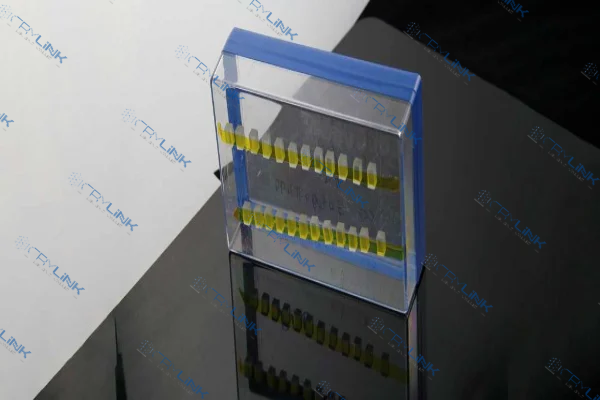
Practical Applications and Selection Criteria for Birefringent Crystals
Birefringent crystals, while being vital research tools in the lab, are also key players in various practical applications. Green and blue laser generation often leverages their superior phase matching and conversion efficiencies. In the realm of nonlinear optics, these crystals are indispensable for their capacity to manipulate light in unique ways that aren’t possible with traditional optics. Laser-based imaging systems also frequently utilize these crystals to enhance image quality and resolution, often making the difference in high-precision tasks.
However, selecting the right crystal for a specific application can be a complex task. It is not a one-size-fits-all solution, but rather a careful balance of multiple factors. The specific frequency conversion needs, desired phase-matching properties, conversion efficiency, and tolerance to temperature variations all come into play. Additionally, practical considerations such as the crystal’s thermal conductivity, damage threshold, and environmental stability can also influence the choice. By understanding these factors and how different crystals like BBO, LBO, and CLBO stack up against them, one can make an informed decision and select the most suitable birefringent crystal for their specific needs.
Conclusion
Understanding the unique properties and applications of BBO, LBO, and CLBO crystals can inform strategic decisions in laser frequency doubling. Each crystal provides unique benefits and potential challenges. By understanding these, one can optimize the application of birefringent crystals for their specific needs.
FAQs
- 1. What is laser frequency doubling?
- Laser frequency doubling, or second harmonic generation, is a process that converts two photons from a laser into one photon with twice the energy, effectively doubling the frequency.
- 2. Why are birefringent crystals used in frequency doubling?
- Birefringent crystals are used in frequency doubling due to their unique optical properties which enable phase matching, a critical phenomenon for efficient second harmonic generation.
- 3. What makes BBO crystals ideal for frequency doubling?
- BBO crystals are ideal for frequency doubling due to their wide transparency range, high optical homogeneity, excellent phase-matching abilities, and high conversion efficiencies.
- 4. How does LBO compare to BBO and CLBO crystals?
- LBO crystals compare favorably with BBO and CLBO, offering broad transparency, high damage threshold, excellent chemical and mechanical properties, unique phase-matching capabilities, and high conversion efficiency.
- 5. What are some applications of birefringent crystals?
- Birefringent crystals are used in a variety of applications including green and blue laser generation, nonlinear optics, and laser-based imaging systems.


